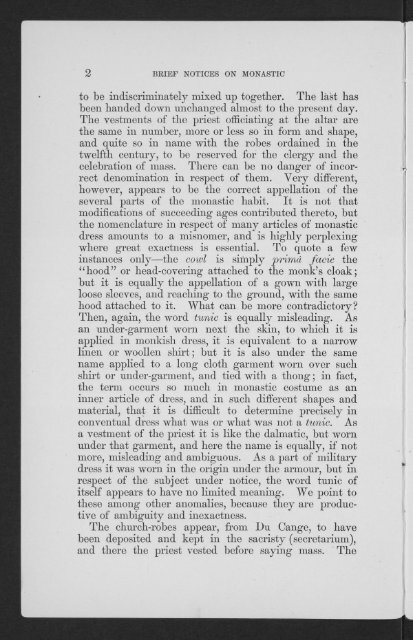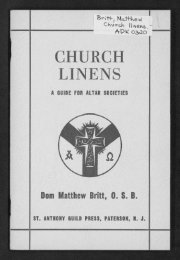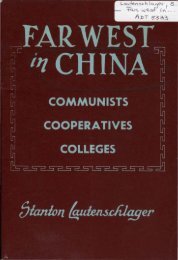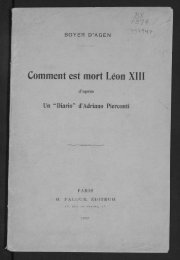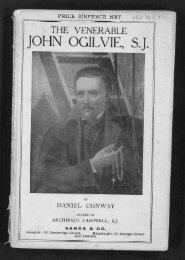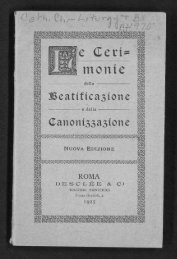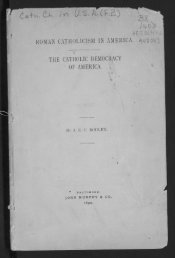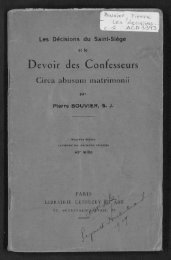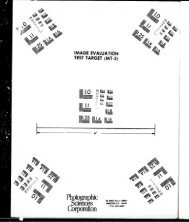MONASTIC AND ECCLESIASTICAL. COSTUME.
MONASTIC AND ECCLESIASTICAL. COSTUME.
MONASTIC AND ECCLESIASTICAL. COSTUME.
You also want an ePaper? Increase the reach of your titles
YUMPU automatically turns print PDFs into web optimized ePapers that Google loves.
2 BBIEF NOTICES ON <strong>MONASTIC</strong><br />
to be indiscriminately mixed up together. The last has<br />
been handed down unchanged almost to the present day.<br />
The vestments of the priest officiating at the altar are<br />
the same in number, more or less so in form and shape,<br />
and quite so in name with the robes ordained in the<br />
twelfth century, to be reserved for the clergy and the<br />
celebration of mass. There can be no danger of incorrect<br />
denomination in respect of them. Very different,<br />
however, appears to be the correct appellation of the<br />
several parts of the monastic habit. It is not that<br />
modifications of succeeding ages contributed thereto, but<br />
the nomenclature in respect of many articles of monastic<br />
dress amounts to a misnomer, and is highly perplexing<br />
where great exactness is essential. To quote a few<br />
instances only—the cowl is simply prima facie the<br />
"hood" or head-covering attached to the monk's cloak;<br />
but it is equally the appellation of a gown with large<br />
loose sleeves, and reaching to the ground, with the same<br />
hood attached to it. What can be more contradictory?<br />
Then, again, the word tunic is equally misleading. As<br />
an under-garment worn next the skin, to which it is<br />
applied in monkish dress, it is equivalent to a narrow<br />
linen or woollen shirt; but it is also under the same<br />
name applied to a long cloth garment worn over such<br />
shirt or under-garment, and tied with a thong; in fact,<br />
the term occurs so much in monastic costume as an<br />
inner article of dress, and in such different shapes and<br />
material, that it is difficult to determine precisely in<br />
conventual dress what was or what was not a tunic. As<br />
a vestment of the priest it is like the dalmatic, but worn<br />
under that garment, and here the name is equally, if not<br />
more, misleading and ambiguous. As a part of military<br />
dress it was worn in the origin under the armour, but in<br />
respect of the subject under notice, the word tunic of<br />
itself appears to have no limited meaning. We point to<br />
these among other anomalies, because they are productive<br />
of ambiguity and inexactness.<br />
The church-robes appear, from Du Cange, to have<br />
been deposited and kept in the sacristy (secretarium),<br />
and there the priest vested before saying mass. The


